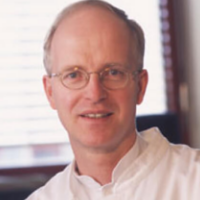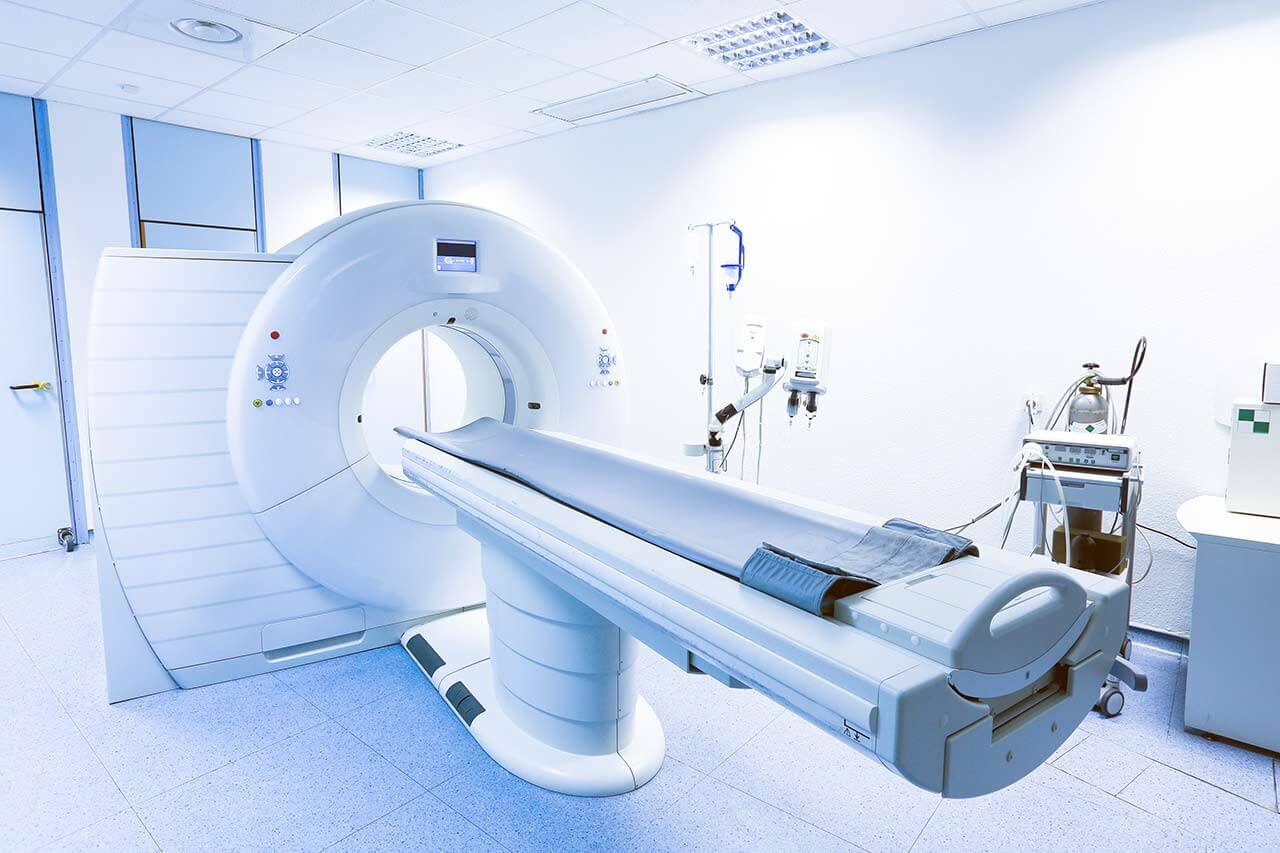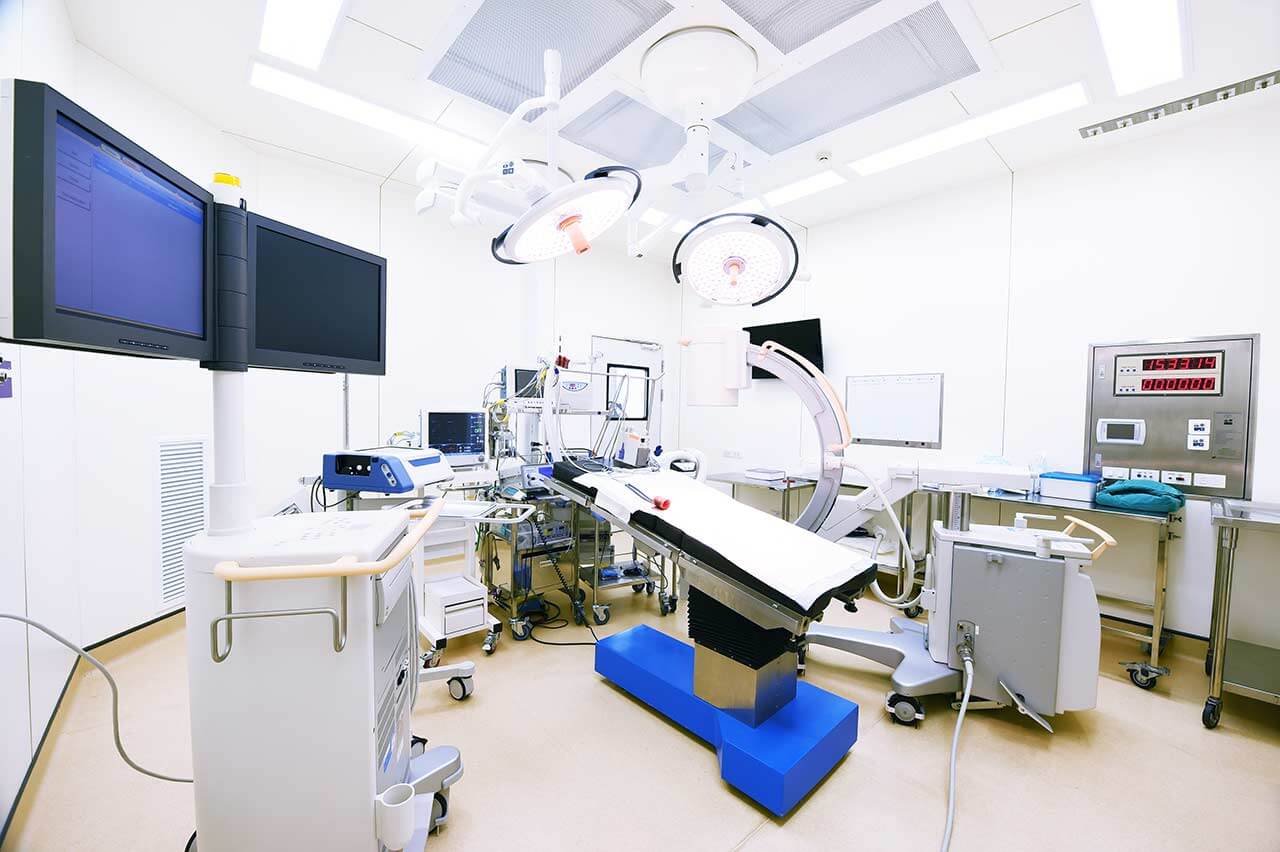
The program includes:
- Initial presentation in the clinic
- clinical history taking
- review of medical records
- physical examination
- ophthalmological examination:
- slit lamp examination
- pupil examination
- ocular motility examination
- ophthalmoscopy
- perimetry (visual field test)
- computer perimetry
- visometry (without correction and with correction)
- keratometry
- pachymetry
- refractometry (objective, subjective, cycloplegic)
- autorefractometry
- non-contact tonometry
- fluorescein angiography (if indicated clinically)
- optical coherence tomography OCT (if indicated clinically)
- gonioscopy
- photokeratoscopy
- doppler ultrasound of the retinal vessels
- nursing services
- consultation of related specialists
- treatment by chief physician and all leading experts
- explanation of individual treatment plan
Service
You may also book:
 BookingHealth Price from:
BookingHealth Price from:
About the department
The Department of Adult and Pediatric Ophthalmology at the University Hospital Erlangen offers all the possibilities of modern medicine for the diagnostics and treatment of diseases of the eye and its appendages. The team of the department's ophthalmologists provides effective treatment of both simple and complex ophthalmic diseases in patients of all age categories, ranging from young children to adults and the elderly. The department's clinical practice focuses on the treatment of cataracts, glaucoma, retinal diseases, tear duct and eyelid surgery, as well as corneal transplantation. The department also provides emergency medical care around the clock. The department has 80 beds and seven state-of-the-art operating rooms, including an outpatient operating room, which makes it one of the largest specialized medical facilities of this kind. The medical facility annually admits about 38,000 outpatients and 6,000 inpatients. The high competence of doctors allows them to achieve successful treatment results and give people the opportunity to see the world in bright colors. The department is headed by Prof. Dr. med. Friedrich Kruse.
The department began its work in 1843 and has managed to accumulate a rich and unique clinical experience in the area of its specialization. The medical facility has the most advanced diagnostic equipment, as well as innovative laser and surgical devices, thanks to which provides both sparring and effective treatment of ophthalmic pathologies. The introduction of a strict quality management system, continuous professional development of medical personnel and close cooperation with private practitioners and doctors of related fields allow the department's specialists to maintain high standards of medical care and effectively restore patients' vision.
One of the most common ophthalmic diseases is cataract, and the department has all the necessary modern resources to cure it. In most cases, the disease develops in the elderly, for example, due to traumatic injuries, inflammation, radiation exposure and age-related changes. Nevertheless, cataract also occurs in newborns (congenital cataracts), and therefore the tasks of the department's ophthalmologists include cataract screening in babies and follow-up treatment when the diagnosis is confirmed. A huge advantage of the department is the availability of all modern diagnostic methods, which allow detecting cataract at the early stages, when a person may not be aware of the presence of the disease. Doctors perform eye biomicroscopy and determine the exact stage of the disease. At the early stages of cataract, drug therapy is possible, which allows patients to avoid the progression of the pathology, but at the advanced stages, the only effective method of correction is surgery. The operation involves replacing the clouded lens with an artificial one, which is practically indistinguishable from the natural one. The department's specialists treat cataract using an advanced technique, namely, ultrasonic phacoemulsification with femtolaser support. The patient is discharged from the hospital a few days after the operation, and full recovery takes about two months. Each patient receives individual recommendations to speed up the healing process of the eye and restore vision.
The department's competence also includes both diagnostics and treatment of glaucoma. Glaucoma belongs to the category of the most severe ophthalmic diseases. Without timely treatment, glaucoma progresses rapidly and leads to irreversible blindness. The pathological process begins with a deterioration in peripheral vision and at the final stage causes the destruction of the optic nerve. The danger of the disease lies in the fact that it does not manifest itself in any way at the early stages. Thus, timely preventive examination plays a decisive role. To confirm the diagnosis, a set of diagnostic measures is required, including examinations of the visual fields to identify defects in central and peripheral vision, refractometry, ultrasound examinations, assessment of the anterior chamber depth, as well as perimetry, tonometry, tests to determine the thickness and diameter of the lens. When the diagnosis is made and the exact stage of the disease is determined, the department's doctors develop a treatment regimen for glaucoma. With the appropriate treatment, the progression of the disease slows down significantly, but, unfortunately, modern medicine does not allow the doctors to eliminate this pathology completely. The main task of the department's specialists is to normalize the blood supply to the optic nerve, improve metabolic processes in the structures of the eyeball and reduce intraocular pressure. As a rule, patients are prescribed conservative treatment with the use of eye drops, means to improve the outflow of fluid inside the eye, as well as drugs that suppress the production of intraocular fluid.
The department's doctors demonstrate outstanding results in refractive eye surgery – PRK/LASEK, Femto-LASIK and artificial lens implantation. All procedures are performed on the most modern equipment, using laser technology. The department's doctors have long experience in the treatment of diseases of the eyeball and vision impairment. The state-of-art equipment in the department is characterized by high correction accuracy and ensures minimal risk of complications. The vision correction procedures carried out by the department's doctors allow them to restore vision with minimal trauma rate to the eye. The department most often admits patients with hyperopia, myopia and astigmatism. The recovery period after refractive eye surgery takes no more than 3 days. It should be noted that the department widely uses Femto-LASIK technology, during which exclusively laser technologies are used, without the additional application of a steel blade. This intervention requires two laser systems – an excimer laser and a femtolaser. The technology allows the doctors to achieve high indicators of visual acuity, improve contrast and clarity of vision. The risks of complications after this therapeutic manipulation are practically zero. The patient can sit at the computer or go in for sports in just a few days.
Due to the advanced technical base and long experience of specialists, corneal transplantation using perforating keratoplasty, DMEK, DSAEK, DALK is available in the department. The main advantage of these technologies is a low risk of graft rejection, low trauma to the eyeball, the absence of corneal sutures and a low risk of postoperative complications. The department's specialists have long experience, which practically eliminates the risk of the need for a second intervention due to transplant rejection. After corneal transplantation, patients stay in the hospital for several days, after which they undergo postoperative rehabilitation that can significantly improve the quality of life.
The department's main clinical focuses include:
- Conservative treatment methods
- Botulinum toxin injections (for example, for spastic eyelids and recurrent corneal ulcers)
- Infusion therapy (for example, in case of retinal circulatory disorders or acute increase in intraocular pressure)
- Drug therapy for circulatory disorders of the retina and optic nerve (papillary infarction, venous occlusion, arterial occlusion)
- Treatment of eye tumors
- Treatment of eye injuries
- Selection of contact lenses and glasses
- Laser treatments, including refractive eye surgery (PRK/LASEK, Femto-LASIK, artificial lens implantation), correction of strabismus in adults and children
- Surgical treatment methods
- Surgical treatment of cataract
- Surgical treatment of glaucoma
- Trabeculectomy
- Canaloplasty
- Trabeculectomy
- Micro-stent implantation
- Cyclodestructive interventions
- Corneal transplantation
- Perforating keratoplasty
- DMEK
- DSAEK
- DALK
- Surgical treatment of retinal and vitreous diseases, including in premature babies (in cooperation with the Department of Pediatric and Adolescent Medicine)
- Surgical treatment of eye tumors
- Surgical treatment of eye injuries
- Surgical treatment of pathologies of the eyelids, tear ducts and orbit
- Plastic reconstructive eyelid surgery
- Functional surgery for malformations (for example, blepharoptosis, entropion, ectropion)
- Functional eyelid surgery for benign and malignant eyelid tumors
- Reconstructive eyelid surgery after removal of benign or malignant tumors, after eye injuries, congenital changes, etc.
- Aesthetic (cosmetic) eyelid surgery with laser or scalpel
- Plastic reconstructive eyelid surgery
- Tear duct surgery
- Tear duct dysfunction
- Tear duct obstruction
- Consequences of injuries
- Inflammatory and tumor changes in the lacrimal gland and lacrimal ducts
- Orbital surgery
- Bulging eyes with exophthalmos
- Enlarged palpebral fissure
- Benign and malignant tumors
- Other treatment options
Curriculum vitae
- 1977 - 1984 Study of Medicine at the Faculty of Medicine (including preclinical training) at the Free University of Berlin and Ruprecht Karl University of Heidelberg.
- 1982 - 1985 Doctoral thesis "Modulation of intracellular amino acids in hepatocytes in a perfusion model of the liver and fibroblasts".
- 1983 - 1984 One-year medical practice, Department of Ophthalmology, University Hospital Heidelberg.
- 1993 Habilitation. Subject: "Function of corneal stem cells and transient amplified cells".
Positions
- 1980 - 1982 Lecturer at the Department of Biochemistry at the Free University of Berlin.
- 1984 - 1988 Resident in the Department of Ophthalmology at the University Hospital Heidelberg.
- 1988 - 1991 Research Fellow, Bascom Palmer Eye Institute, Miami, Florida.
- 1993 Faculty and Department of Ophthalmology, University of Heidelberg.
- 1994 Assistant Professor, University of Heidelberg.
- 2000 Associate Professor, University of Heidelberg.
- 2004 Full Professor for Ophthalmology and Head of the Department of Adult and Pediatric Ophthalmology, University Hospital Erlangen.
Other Activities
- Since 1984 Applicant of grants from the German Research Foundation (more than 20 grants, including SFB 539).
- Since 2004 Leading Research Fellow in Clinical Ophthalmology within SFB 539 (Glaucoma and Pseudoexfoliation Glaucoma).
- 2005 - 2007 Vice Speaker, SFB 539 (Glaucoma and Pseudoexfoliation Glaucoma).
- 2010 - 2011 Responsible for Research Grants within Spitzencluster of BMBF Medical Valley EMN (Center of Excellence for Medical Technology).
Photo of the doctor: (c) Universitätsklinikum Erlangen
About hospital
According to the Focus magazine, University Hospital Erlangen ranks among the best medical facilities in Germany!
The hospital is one of the leading healthcare facilities in Bavaria and offers top-class medical care distinguished by the close intertwining of clinical activities with research and training of medical students. The hospital was founded in 1815 and today is proud of its rich traditions, numerous medical achievements and an excellent reputation not only in Germany, but also in the international arena. The hospital has 25 specialized departments, 7 institutes and 41 interdisciplinary centers, whose experts work tirelessly for the benefit of their patients.
The hospital has the status of a maximum care center, and therefore it represents almost all fields of modern medicine. Oncology, transplant medicine, and robot-assisted surgery are among the top priorities of the clinical activities of the medical complex. Oncology is represented by the Comprehensive Cancer Center Erlangen, which is one of 13 centers of excellence in Germany certified by the German Cancer Society. The university hospital has a high-tech center with high success rates for heart, liver, kidney, pancreas, cornea and bone marrow transplants. In addition, the hospital is a leader in the use of robot-assisted surgery. The medical facility has at its disposal innovative robotic technologies, in particular the da Vinci Surgical System, with the help of which surgeons perform many sparing interventions in various medical fields.
The medical team of the hospital consists of highly professional therapists, surgeons and nursing staff. The focus of their efforts is on the patient, his health and peace of mind, as well as comfort during treatment. The clinical practice of doctors is based on an individual approach to each case, which results in high treatment success rates. State-of-the-art technical equipment also plays an important role in the therapeutic process. The hospital is proud of the most advanced devices for imaging diagnostics (X-ray, ultrasound, CT, MRI, PET-CT, SPECT-CT, etc.), endoscopic examinations, laboratory tests, as well as specially equipped operating rooms for robot-assisted interventions, image-guided therapeutic manipulations, minimally invasive and classical surgeries of any complexity. Thus, the doctors of the university hospital have all the necessary resources to effectively treat the most severe pathologies and save lives.
The combination of high-tech equipment, experienced and highly qualified personnel, as well as strict adherence to the standards of modern medicine, form a solid foundation for the provision of the best medical care at the European level. An undeniable proof of the high prestige of the hospital is the constantly growing number of patients who come here from various regions of Germany and other countries of the world.
Photo: (с) depositphotos
Accommodation in hospital
Patients rooms
The patients of the University Hospital Erlangen live in comfortable rooms with light colors and modern design. Each patient room has an ensuite bathroom with shower and toilet. The furnishing of the patient room includes an automatically adjustable bed with an orthopedic mattress, a bedside table, a wardrobe, a table and chairs for receiving visitors, a TV, a radio and a telephone. Wi-Fi can be provided upon request. The use of a mobile phone is prohibited in many rooms of the hospital.
Patients can also live in enhanced-comfort rooms with a more sophisticated design. The enhanced-comfort rooms additionally include upholstered furniture, a minifridge and a safe.
Meals and Menus
The hospital offers healthy and tasty food distinguished by many awards, including the 1st place in the prestigious ESSEN PRO GESUNDHEIT competition of the Bavarian State Ministry of the Environment and Consumer Protection.
The patient and the accompanying person have three meals a day. Breakfast is served buffet style: scrambled eggs, boiled eggs, sausage, cheese, bread and buns with butter and jam, cereals, etc. There are three set menus for lunch and dinner to choose from: a classic menu featuring local cuisine dishes, a Mediterranean menu and a vegetarian menu.
If for some reason you do not eat all the foods, you will be offered an individual menu. Please inform the medical staff about your dietary preferences prior to the treatment.
The hospital also houses many cafeterias, which will delight with a wide range of delicious dishes and drinks.
Further details
Standard rooms include:
Religion
The hospital regularly hosts catholic and evangelical devine services. The services of representatives of other religions are available upon request.
Accompanying person
During an inpatient program, an accompanying person can stay with you in the patient room or in a hotel of your choice.
Hotel
During an outpatient program, you can stay in a hotel of your choice. The managers will help you choose the most suitable options.




